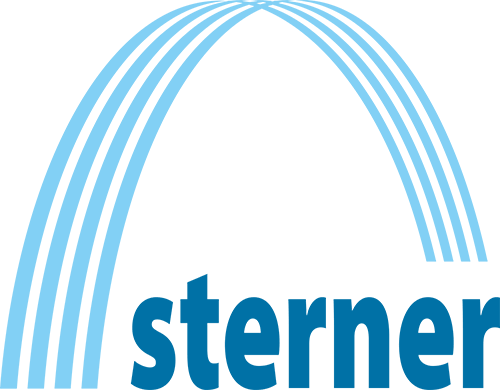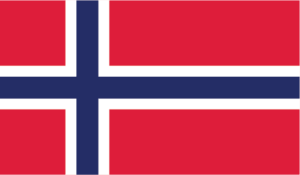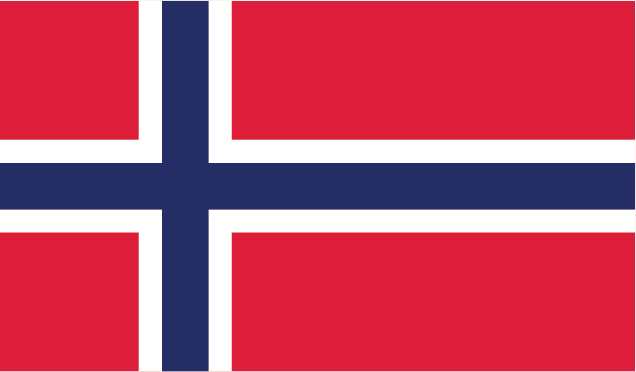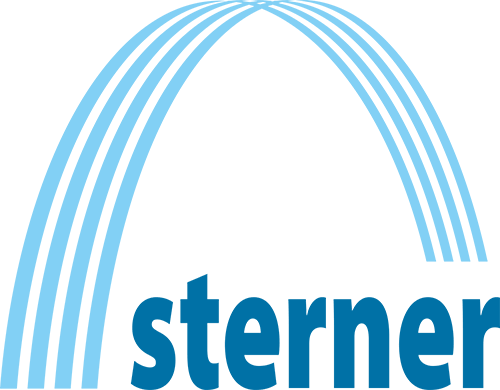Transparency Act
Transparency Act
Sterner AS is a leading Norwegian company delivering technology for clean water. Within the market areas of drinking water, maritime, wastewater treatment, and aquaculture, the company provides innovative and robust water purification solutions. This includes processes, components, and complete systems aimed at purification, gas exchange, recirculation, filtration, and disinfection of water.
Sterner AS consists of a team with strong design and project management expertise and works with the industry’s most recognized products while also developing its own products and solutions.
The company’s headquarters are located in Ski, with branch offices in Porsgrunn, Bergen, and Leknes. Sterner AS has an annual turnover of approximately NOK 300 million and around 60 employees, including a large service network that stretches across Norway to ensure close follow-up of installations throughout their lifetime.
Sterner AS is an industrial company with 30 years of experience safeguarding vital resources for humanity and has therefore long focused on sustainability in its operations. Our employees are driven by competence, customer focus, and commitment to providing innovative, reliable, and sustainable solutions for today’s and tomorrow’s clean water systems and products. Our customers operate in both the private and public sectors, primarily in Norway and the Nordic region. Sterner AS has a diverse value chain with multiple levels and suppliers. We manufacture some products in Norway but mainly source components from suppliers in Europe.
Commitment to Sustainability and Human Rights
Sustainable development — including its social dimension — is a high priority for us. Therefore, we maintain a continuous focus on positive impacts on people throughout our value chain. Through Norway’s Transparency Act (Åpenhetsloven), we are committed to mapping, analyzing, and implementing measures to reduce risks related to human rights violations, corruption, ethical trade, and decent working conditions. This report outlines that work.
Anchoring and Accountability Across the Organization
Internal Ethical Guidelines
Sterner has experienced significant growth in recent years. Following a planned group differentiation into several specialist companies, we have now decided to refocus on our core competence — clean water technology — under one company. We have therefore harmonized our internal ethical guidelines and adapted them to meet increased demands.
By 2025, all internal ethical guidelines will have been approved by the Board, communicated to employees, and implemented in our employee handbook.
Supplier Code of Conduct
The Supplier Code of Conduct was developed during summer and autumn 2024. It has been anchored in the Board during its development, and both the system and content will be introduced to employees during the second half of 2025. The purpose of the Supplier Code of Conduct is to ensure that violations of human rights, indecent working conditions, and corruption do not occur. The guidelines are based on our internal code of ethics and the requirements of the Transparency Act.
In addition, a self-declaration form has been developed for suppliers. It must be signed by all key existing suppliers as well as all new ones.
Routines for the Transparency Act
In recent years, Sterner has worked to implement procedures to ensure compliance with the Transparency Act. These efforts intensified through 2024 and have been anchored in the Board and management, making them a guiding principle in our procurement work. We are continuously embedding these routines through effective communication, organization, and training.
A dedicated working group for the Transparency Act has been established, consisting of the Purchasing Manager and the HSE & Quality Manager. This group holds regular status meetings to conduct risk and due diligence assessments and to follow up with suppliers and partners.
Risk Assessments – The Foundation of Transparency Work
Internal Risk Assessment in Sterner AS
Employee safety is our highest priority. Therefore, thorough HSE planning and follow-up are critical to our operations. We operate in industries involving physical work with machinery and equipment, which inherently includes risk factors such as workplace injuries. Sterner AS employs people based in Norway but also uses foreign labor through subcontractors. These are among the risks we have evaluated in our internal assessments.
Our operational routines include controls for safety inspections, wage adjustments, overtime use, compensation, rest periods, and whistleblowing systems. Whistleblower procedures and employee surveys are integrated into the company.
At the start of our work under the Transparency Act, a self-evaluation was carried out. Risks are continuously assessed based on the OECD risk model, described in the next section.
Supplier and Value Chain Risk Assessment
Procurement risk assessments are crucial in identifying whether there are violations of fundamental human rights and decent working conditions within our value chain, as required by §4 of the Transparency Act. Sterner AS acknowledges that some of our suppliers operate in countries with higher risk levels.
Mapping of value chains and risk assessments is underway. The process is based on the OECD Guidelines for Due Diligence for Responsible Business Conduct. A risk assessment tool has been developed focusing on both supplier risk and internal risk.
• Supplier risk refers to the risks related to the supplier’s industry, product type, and country of operation.
• Internal risk refers to the monetary volume of business we conduct with that supplier.
As part of this mapping, self-declaration forms were sent to suppliers based on their industry and location. Their responses were incorporated into our risk assessments. The questions related to our ethical guidelines and covered:
• Human rights
• Working environment, HSE, employment, and labor conditions
• Climate and environment
• Country and region of operation
• Anti-corruption, finance, and quality management
The working group analyzed and prioritized eight companies with the highest combined supplier and internal risk and followed up with specific actions and measures, described in the next section. The following OECD-based criteria were used:

0-9 All conditions marked green in the risk matrices have low risk and can be accepted without the need to take action.
10-19 All conditions marked yellow: risk-reducing measures should be implemented at the supplier and Sterner shall monitor that the measures are carried out.
20-29 All conditions marked orange are high and measures must be implemented within a short time, or Sterner must consider performing an audit, following up on measures and assessing whether the supplier can be approved, or possibly consider terminating the contract.
30-256 All conditions marked red: Sterner AS must immediately contact the supplier and request an explanation of the ongoing measures. And reassess the risk. If measures are not carried out within an acceptable period of time, the contract must be terminated.
Probability
1 – Low (Violation unlikely within 3–5 years)
2 – Moderate (Likely within 3–5 years)
3 – High (Likely within 1–3 years)
4 – Very high (Ongoing violation)
Scope
1 – Low (0–10% affected)
2 – Medium (10–25%)
3 – High (25–75%)
4 – Very high (75–100%)
Consequence
Consequence is evaluated by severity (1–4) and the possibility of remediation (1–4). These factors are multiplied to produce a total risk score.
Concrete Measures to Reduce Risk of Violations of Human Rights and Labor Standards
Internal Measures at Sterner AS
We have implemented several measures and guidelines to prevent violations, including:
• Training in human rights and responsible procurement for relevant employees
• Whistleblowing system
• Employee surveys
• Language training to ensure understanding of environmental and safety procedures
• Environmental certification
• Monitoring of overtime to ensure compliance with labor laws
Supplier Follow-Up
Results of Risk Assessments and Measures Implemented
Continuous Work and Future Efforts
Sterner AS’s value chain consists of many suppliers and intermediaries, which inherently makes full transparency challenging.
We emphasize that this is an ongoing process — and we can never consider our follow-up complete. However, we believe that the assessments and measures implemented so far are appropriate and proportionate to our operations.
Moving forward, Sterner AS will continue to strengthen our evaluations and risk assessments to minimize potential negative impacts on fundamental human rights and decent working conditions — whether caused by or linked to our activities — and to implement relevant corrective measures.




